Four Significant Flora Introduced To Hawaii By Early Polynesian Voyagers
When voyaging Polynesians made their first trips to the Hawaiian Islands, they brought canoe crops to plant in their new home. Today we share 4 important Polynesian-introduced flora: Paper Mulberry, Sweet Potatoes, Coconuts, and Alexandrian Laurel.
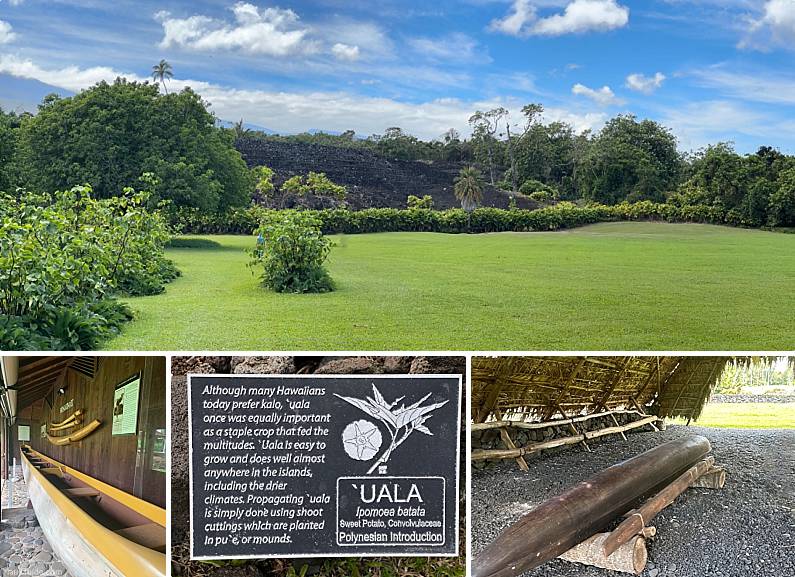
WAUKE – Paper Mulberry
Broussonetia papyrifera (L.) Vent.
Moraceae, Mulberry Family
Polynesian Introduced
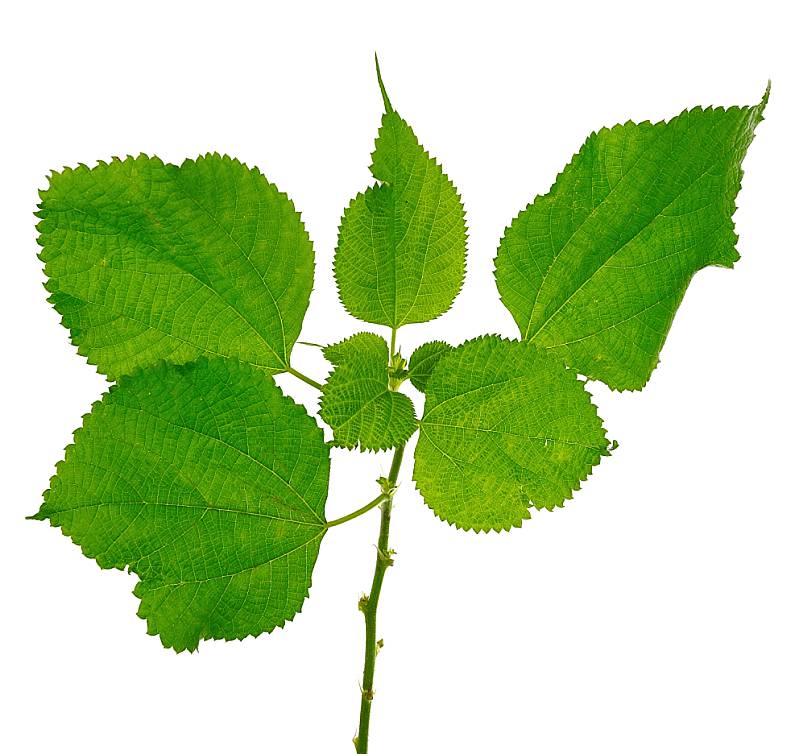
Wauke, like its relative the ‘ulu, has leaves that are deeply lobed and a texture similar to sandpaper. They both also self-propagate by sending up sucker plants from its spreading roots. The inner bark, or bast fibers, of the wauke plant, is processed by stripping, soaking, and felting into kapa (bark cloth). Finished pieces of kapa could be colored with a variety of plant-extracted dyes, and further decorated with intricate designs from ʻohe kapala (carved bamboo stampers) and lapa (liners).
Tools used in kapa production include kua kuku (wood anvils) and iʻe kuku (wood beaters). Made from select Hawaiian hardwoods, these tools made it possible for Hawaiians to make some of the finest kapa throughout Polynesia. Some pieces are so delicate and extraordinarily fine that they are compared to lace.
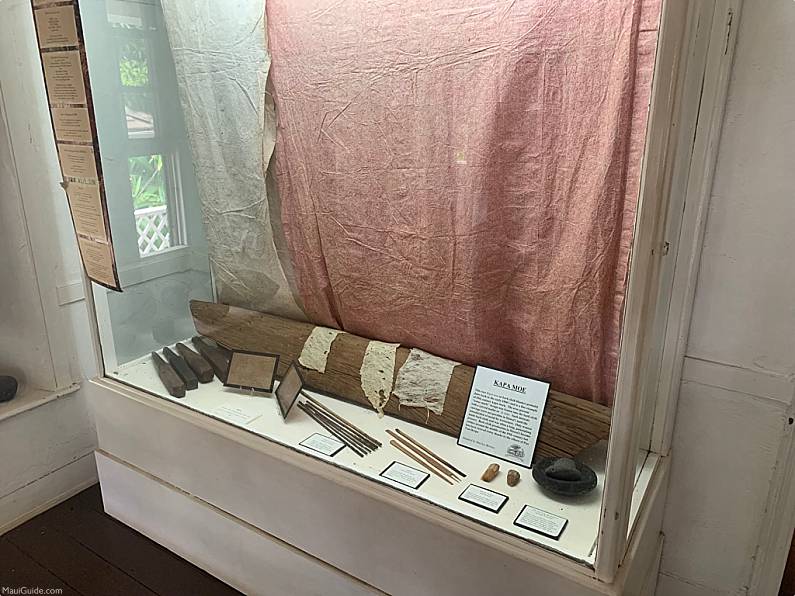
Legend identifies wauke with the goddess Hina on the island of Maui. Legend holds that in ancient times, the sun traveled so fast across the sky that Hina’s kapa barely had time to dry. Realizing this, her demigod son, Maui, went to the place where the sun rises (the crest of the great volcanic mountain, Haleakalā). There he watched and lassoed the first ray that rose, thereby slowing the sun down for his mother.
“Eia ʻiʻo no, ke kolo mai nei ke aʻa o ka wauke.”
Truly now, the root of the wauke creeps.
“It was not destroyed while it was small; now it’s too big to cope with.” This was said of the great warrior Kamehameha, who was ordered to be killed as a baby by Alapaʻi, but the attempt was unsuccessful.
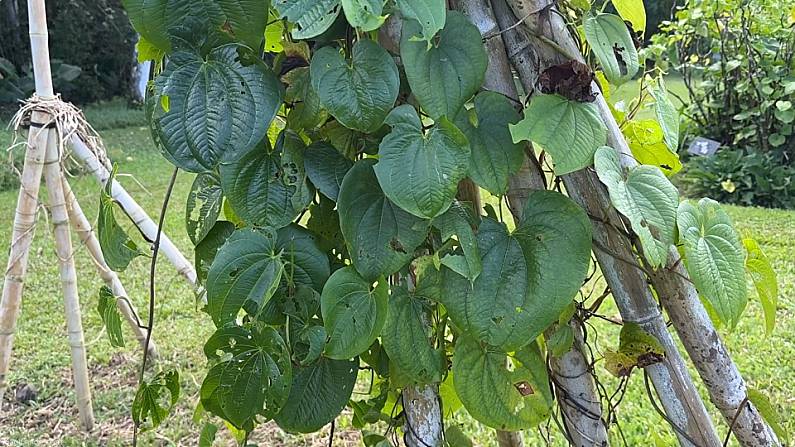
ʻUALA – Sweet Potato
Ipomoea batatas (L.) Lam.
Convolvulaceae, Morning Glory Family
Polynesian Introduced
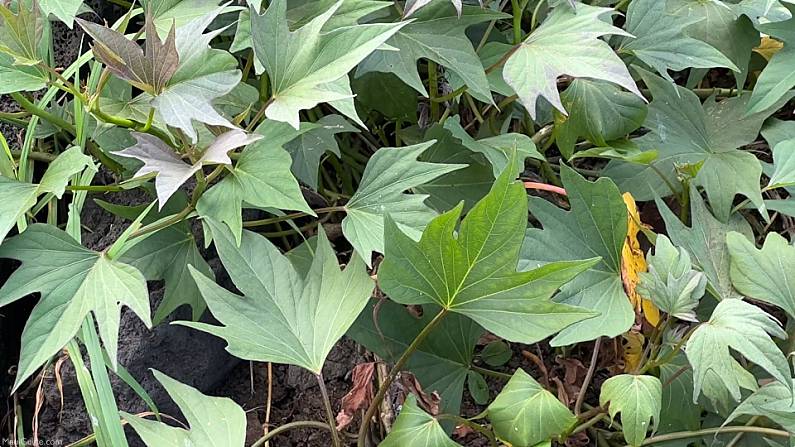
ʻUala is another staple food of Hawaiian culture. Interestingly, this vine is the only Polynesian-introduced plant that traces its origins to South America. The leaves are heart-shaped and the plant produces lavender-pink flowers that form a tube at their base. The roots of the ‘uala form large tubers also known as sweet potatoes. Depending on the variety, the color of the flesh and skin of the tubers will vary.
‘Uala can grow in both wet and dry areas and is cultivated mainly for food. The tubers can be baked or steamed, mashed, and mixed with water to make poi ʻuala, or with coconut cream to make kō’elepālau (sweet pudding). You’ll often see ‘Uala incorporated into desserts at luaus on Maui. The young leaf tips are steamed and eaten as a green vegetable called palula.
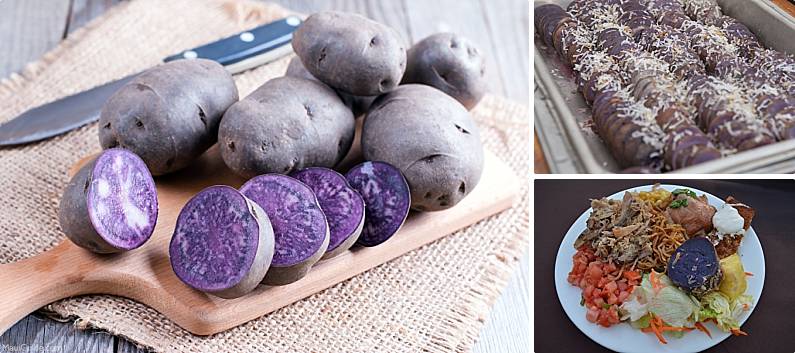
Medicinally, ʻuala is used for asthma, gargled for sore throat, and as a laxative. Some mothers wear lei of sweet potato vine around their necks to ensure the flow of breast milk.
According to Hawaiian lore, the god of ʻuala is named Kamapuaʻa.
“Kama” translates to “person or man”, and “puaʻa” translates to “pig.” Kamapua’a is believed to be half-man and half-pig. A favored food of pigs, Kamapua’a is said to have raided and uprooted many ʻuala patches with his snout.
“ʻŌpū palula.”
Stomach full of sweet potato greens.
Said of an ignorant person who can only grow sweet potatoes.
NIU – Coconut
Cocos nucifera L.
Arecaceae, Palm Family
Polynesian Introduced
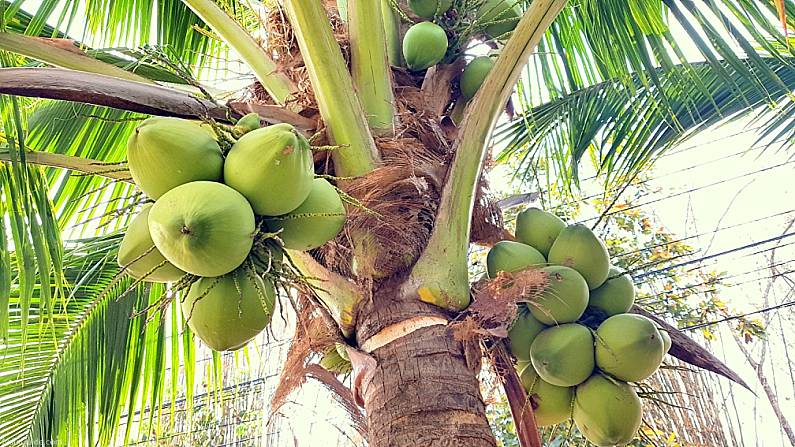
In many parts of the tropics, the coconut is called the “Tree of Life” because of its many uses. A wonderful source of liquid refreshment, niu has made it possible for people to colonize remote lands, including Hawaii. In addition to providing people with food and water, niu provides leaves for weaving and thatching, trunks for pahu drums, nut shells For bowls and tools, and husks for straining liquids, starting fires, and making cordage.
PLEASE STAY CLEAR OF THE COCONUT TREES. FALLING LEAVES AND NUTS ARE VERY DANGEROUS!
KAMANI – Alexandrian Laurel
Calophyllum inophyllum L.
Guttiferae (Clusiaceae), Mangosteen Family
Polynesian Introduced
Kamani is a handsome, low-branching tree that can grow up to 60 feet tall. It tends to grow in lowland areas. The rough, gray bark conceals a hardwood beneath. With its oval leaves, spherical fruits, and fragrant white flowers reminiscent of orange blossoms, the Kamani is easily recognized.
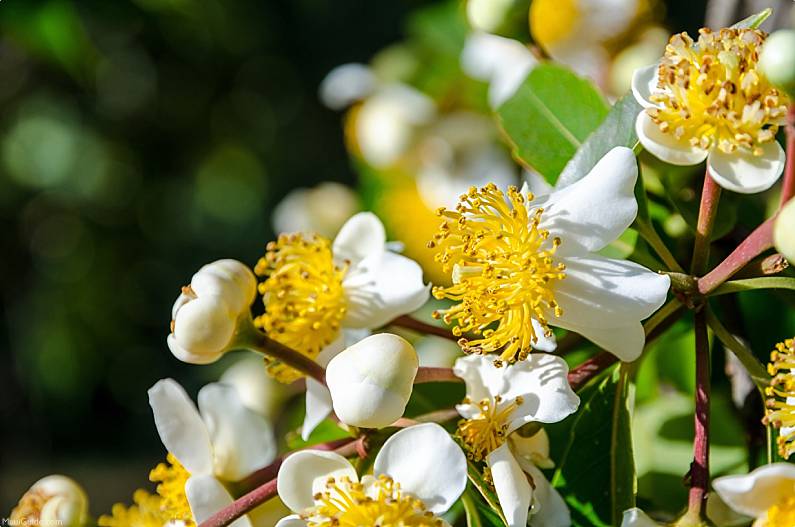
The wood of the Kamani tree is used for making calabashes, dishes, platters, and certain parts of canoes. The round seeds are strung into lei. All parts of this tree are useful medicinally. In other parts of Polynesia, Kamani is considered a sacred tree and is often planted around temples.
An introduced “false kamani” tree with oval, compressed fruits and colorful leaves is sometimes mistaken for this kamani.
Mahalo to Kahanu Gardens for teaching us so much about Polynesian-introduced flora, as well as the people and culture of Hawai’i.

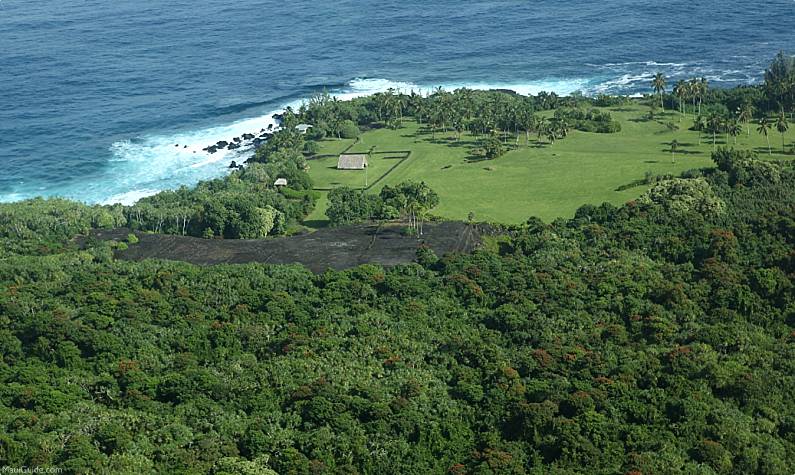

Fabulous article! Mahalo!
Mahalo for sharing the past with us